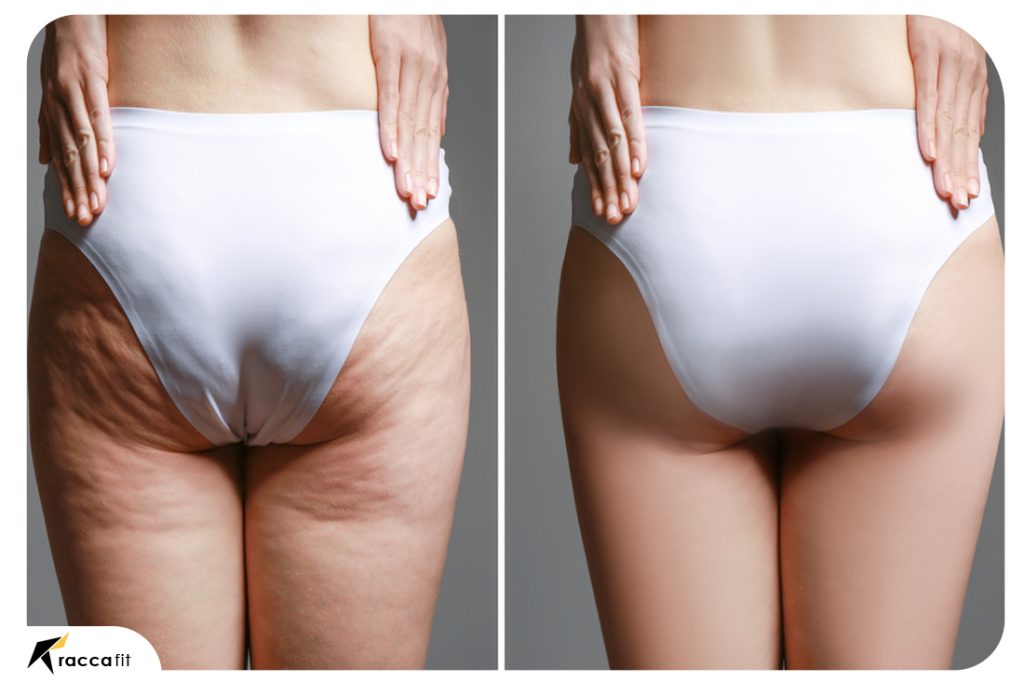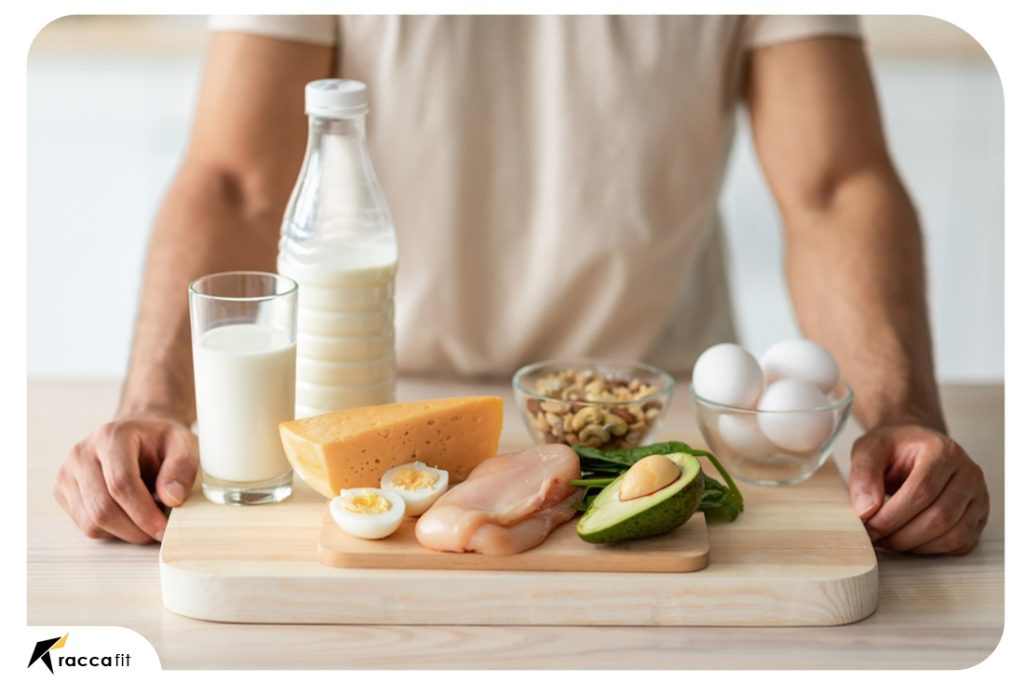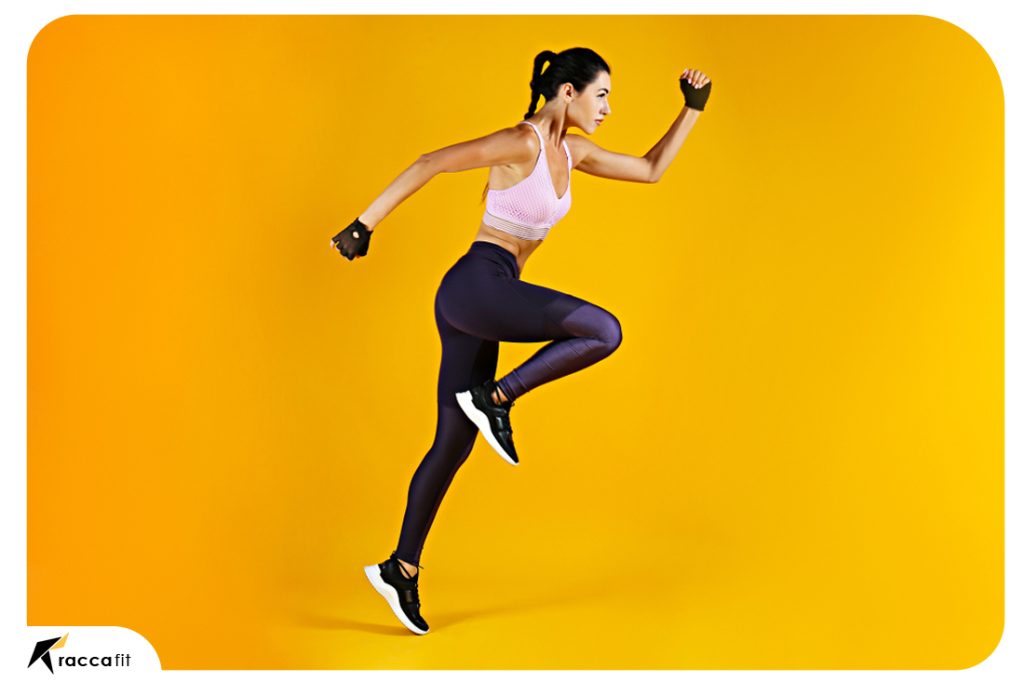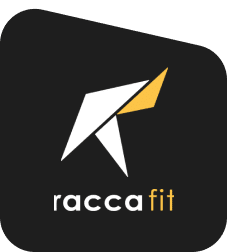Looking to build a stronger, toned, and more shapely butt? Look no further than glute kickbacks! This powerful exercise targets the glute muscles, helping to tone and strengthen the buttocks for a leaner, more defined look. But like any exercise, proper form, technique, and consistency are necessary to see results. This article provides a complete guide on how to perform this exercise correctly and target specific muscles. It also includes tips on frequency for optimal results, suitable for beginners or seasoned fitness enthusiasts. So grab your exercise mat and get ready to kick your way to a better butt with these expert tips and tricks for mastering glute kickbacks!
performing this exercise with proper form is crucial to maximize its effectiveness and avoid injury.
Here’s a step-by-step guide on how to perform correctly:
- Start on all fours with your hands directly under your shoulders and your knees under your hips.
- Engage your core and keep your back flat throughout the exercise.
- Lift one leg off the ground and extend it straight back, squeezing your glutes as you do so.
- Keep your leg straight and your foot flexed, and avoid arching your back.
- Lower your leg back down to the starting position and repeat on the other side.
- Aim for 10-12 repetitions on each leg for 2-3 sets.
Remember to breathe throughout the exercise and avoid swinging your leg or using momentum to lift it. With practice, you’ll be able to perform glute kickbacks with proper form and see results in no time.
Body weight glute kickback
Lying one-leg glute kickback
Machine glute kickback
Which Muscles Are You Targeting?
Glute kickbacks are a popular exercise for targeting the gluteus maximus, which is the largest muscle in the glutes. However, this exercise also targets other muscles in the lower body, including the hamstrings and the lower back.
The gluteus maximus is responsible for hip extension, which means it helps to lift your leg backward. This movement is essential for activities like walking, running, and climbing stairs. By performing glute kickbacks, you’re strengthening this muscle and improving its ability to perform these movements.
In addition to the gluteus maximus, glute kickbacks also engage the hamstrings. These muscles work together with the glutes to perform hip extension and knee flexion. By strengthening your hamstrings, you can improve your overall lower body strength and stability.
Finally, glute kickbacks engage the lower back muscles, particularly the erector spinae. These muscles help to stabilize your spine and maintain proper posture during the exercise. By strengthening your lower back muscles, you can reduce your risk of injury and improve your overall fitness.
Overall, glute kickbacks are an effective exercise for targeting the glutes, hamstrings, and lower back muscles. By incorporating this exercise into your workout routine, you can build a stronger, more toned lower body.
Common Mistakes to Avoid When Doing Glute Kickbacks
When performing glute kickbacks, it’s important to use proper form to ensure that you are targeting the right muscles and avoiding injury. Here are some common mistakes to avoid when doing glute kickbacks:
Arching the back
One of the most common mistakes when performing glute kickbacks is arching the back. This can place unnecessary strain on the lower back and take the focus away from the glute muscles. To avoid this, keep your core engaged and your back straight throughout the movement.
Rounding the shoulders
Another common mistake is rounding the shoulders, which can place additional strain on the neck and upper back. To avoid this, keep your shoulders down and back, and maintain a tall posture throughout the movement.
Not engaging the glutes
It’s important to actively engage the glute muscles throughout the movement to ensure that you are targeting the right muscles. This can be done by squeezing the glutes at the top of the movement and maintaining tension throughout the entire exercise.
Moving too quickly
Performing glute kickbacks too quickly can reduce the effectiveness of the exercise and increase the risk of injury. To avoid this, focus on slow and controlled movements, emphasizing the contraction of the glutes at the top of the movement.
Not using proper equipment
If you are using resistance bands or ankle weights, it’s important to use proper equipment to ensure that you are performing the exercise safely and effectively. Be sure to use equipment that is appropriate for your fitness level and goals.
Remember to always listen to your body and adjust the intensity and frequency of your workouts as needed. By avoiding these common mistakes and using proper form, you can ensure that you are getting the most out of your glute kickback workouts while reducing the risk of injury.
Breathing During Glute Kickbacks: A Beginner’s Guide
Breathing is an important aspect of any exercise, including glute kickbacks. Here’s a beginner’s guide to breathing during glute kickbacks:
- Exhale during the contraction: As you kick your leg back and squeeze your glutes, exhale deeply. This helps to engage the core and enhance the contraction of the glute muscles.
- Inhale during the release: As you lower your leg back down to the starting position, inhale deeply. This helps to promote relaxation and prepare your body for the next repetition.
- Focus on steady, controlled breathing: It’s important to focus on steady, controlled breathing throughout the entire exercise. Avoid holding your breath or taking shallow breaths, as this can interfere with the flow of oxygen to your muscles.
- Match your breath to your movements: Try to match your breathing to your movements, taking a deep exhale as you kick your leg back and a deep inhale as you lower your leg back down.
- Stay relaxed: Remember to stay relaxed throughout the exercise and avoid tensing up or holding your breath. By focusing on steady, controlled breathing, you can enhance the effectiveness of the exercise and improve overall relaxation and focus.
Remember to practice good breathing habits during all of your workouts, including glute kickbacks. With practice, you can learn to sync your breath with your movements and promote relaxation and effectiveness during your exercise routine.

The Truth About Glute Kickbacks and Building a Bigger Butt
Glute kickbacks have become a go-to exercise for many people looking to build a bigger and rounder butt. While this exercise can certainly help to strengthen and tone the glutes, it’s important to understand that building a bigger butt is not just about doing one exercise. Here’s the truth about glute kickbacks and building a bigger butt:
Firstly, building a bigger butt requires a combination of strength training and proper nutrition. While glute kickbacks can help to strengthen the glutes, they won’t necessarily make your butt bigger if you’re not also consuming enough calories and protein to support muscle growth.
Secondly, it’s important to incorporate a variety of exercises into your workout routine to target all of the muscles in the glutes. Glute kickbacks primarily target the gluteus maximus, but there are other muscles in the glutes that also contribute to the shape and size of your butt. Incorporating exercises like squats, lunges, and hip thrusts can help to target these muscles and build a more well-rounded butt.
Finally, genetics also play a role in the size and shape of your butt. Some people may have a naturally larger or rounder butt, while others may need to work harder to achieve their desired results. However, with consistent training and proper nutrition, it’s possible to make progress and build a stronger, more toned lower body.
In summary, glute kickbacks can be a helpful exercise for building a bigger butt, but they should be combined with a variety of other exercises and a proper nutrition plan to maximize results. By taking a comprehensive approach to training, you can build a strong and shapely lower body that you can be proud of.
How Many Glute Kickbacks Should You Do Per Workout?
The number of glute kickbacks you should do per workout depends on your fitness goals, fitness level, and overall workout plan. Here are a few factors to consider when deciding how many glute kickbacks to do per workout:
Fitness goals
If your goal is to simply tone your glutes and improve overall lower body strength, then doing 2-3 sets of 10-12 repetitions per leg should be sufficient. However, if your goal is to build muscle and increase the size of your glutes, then you may need to do more sets or increase the weight/resistance.
Fitness level
If you’re new to glute kickbacks or strength training in general, it’s important to start slowly and gradually increase the number of repetitions and sets as your fitness level improves. Aim for 2-3 sets of 8-10 repetitions per leg to start.
Workout plan
this exercise should be incorporated into a comprehensive workout plan that includes other exercises that target the glutes and lower body, as well as cardiovascular exercise and stretching. Depending on the other exercises in your plan, you may need to adjust the number of kickbacks you do per workout.
Overall, a good starting point for most people is to aim for 2-3 sets of 10-12 repetitions per leg. However, it’s important to adjust the number of repetitions and sets based on your fitness goals, fitness level, and overall workout plan. Remember to listen to your body and increase the number of repetitions and sets gradually to avoid injury and ensure consistent progress over time.
Standing vs. Lying Glute Kickbacks: Which Is Better?
Both are effective exercises for toning and strengthening the glutes. However, each exercise has its own unique benefits and considerations.
Standing glute kickbacks:
- Targets the gluteus medius: target the gluteus medius muscle, which is located on the outer side of the hip. This muscle helps to stabilize the pelvis and maintain proper alignment during movement.
- Works the core: Standing glute kickbacks require more core engagement to maintain balance and stability, making it a good option for those looking to strengthen their core as well as their glutes.
- More challenging: Standing glute kickbacks require more balance and stability, making them a more challenging exercise. However, this also means that they can be more effective for building overall lower body strength.
Lying glute kickbacks:
- Targets the gluteus maximus: primarily target the gluteus maximus, which is the largest muscle in the glutes. This muscle is responsible for hip extension and is important for activities like walking, running, and climbing stairs.
- More isolated: Lying glute kickbacks isolate the glutes more than standing glute kickbacks, making them a good option for those looking to specifically target and strengthen this muscle group.
- Easier to perform: Lying glute kickbacks are generally easier to perform than standing glute kickbacks, making them a good option for beginners or those with limited mobility.
Overall, both standing and lying glute kickbacks can be effective exercises for strengthening and toning the glutes. The choice between these two exercises may depend on your fitness goals, fitness level, and personal preferences. Consider incorporating both exercises into your workout routine for a well-rounded lower body workout.
How Often Should You Do for Optimal Results?
it depends on your fitness goals and overall workout plan. Here are a few factors to consider when determining how often to do them for optimal results:
Fitness goals
If your goal is to simply tone your glutes and improve overall lower body strength, then doing glute kickbacks 2-3 times per week should be sufficient. However, if your goal is to build muscle and increase the size of your glutes, then you may need to do glute kickbacks more frequently, up to 4-5 times per week.
Workout plan
Glute kickbacks should be incorporated into a comprehensive workout plan that includes other exercises that target the glutes and lower body, as well as cardiovascular exercise and stretching. Depending on the other exercises in your plan, you may need to adjust the frequency of your glute kickback workouts.
Recovery time
It’s important to allow your muscles time to recover between workouts to avoid injury and ensure consistent progress over time. Aim to have at least 1-2 days of rest between glute kickback workouts.
Overall, a good starting point for most people is to do glute kickbacks 2-3 times per week. However, it’s important to adjust the frequency of your workouts based on your fitness goals, workout plan, and recovery time. Remember to listen to your body and increase the frequency of your workouts gradually to avoid injury and ensure consistent progress over time.

Can Glute Kickbacks Help Reduce Cellulite? The Truth
Cellulite is a common cosmetic concern that affects many people, particularly women. While there is no one-size-fits-all solution for reducing cellulite, glute kickbacks may be a helpful addition to your overall fitness routine. Here’s what you need to know:
- What causes cellulite? Cellulite is caused by a combination of factors including genetics, age, hormonal changes, and lifestyle factors such as poor diet, lack of exercise, and smoking.
- Can glute kickbacks reduce cellulite? Glute kickbacks can help to tone and strengthen the glute muscles, which can improve overall lower body shape and appearance. While there is no research specifically linking glute kickbacks to a reduction in cellulite, incorporating this exercise into your overall fitness routine may be helpful in improving the overall appearance of your lower body.
- Other ways to reduce cellulite: In addition to glute kickbacks, there are several other lifestyle factors that can help to reduce the appearance of cellulite. These include maintaining a healthy diet, staying hydrated, quitting smoking, and engaging in regular exercise that targets the lower body.
- Managing expectations: It’s important to keep in mind that while glute kickbacks and other exercises can help to improve overall lower body shape and appearance, they may not completely eliminate cellulite. Managing your expectations and focusing on overall health and wellness can help to promote a positive body image and reduce stress related to body appearance.
In summary, while glute kickbacks may not be a direct solution to reducing cellulite, incorporating this exercise into your overall fitness routine can help to tone and strengthen the glute muscles, leading to overall lower body toning and improved appearance. Remember to focus on overall health and wellness, and to manage your expectations when it comes to the appearance of your body.
Glute Kickbacks and Injuries: What You Need to Know
Like any exercise, glute kickbacks can pose a risk of injury if not performed correctly or if you have pre-existing injuries or conditions. Here’s what you need to know about glute kickbacks and injuries:
- Common injuries
The most common injuries associated with glute kickbacks include lower back pain, knee pain, and hip pain. These injuries can occur if you’re not using proper form, or if you have pre-existing injuries or conditions that make it difficult to perform the exercise correctly.
- Proper form
To avoid injury, it’s important to use proper form when performing glute kickbacks. Keep your core engaged and your back flat throughout the exercise, avoid arching your back or swinging your leg, and maintain proper alignment of your hips and knees.
- Warm-up and cool-down
It’s important to warm up your muscles before performing glute kickbacks to reduce your risk of injury. Incorporate dynamic stretches and mobility exercises into your warm-up, and be sure to cool down with static stretches and foam rolling after your workout.
- Modifications
If you have pre-existing injuries or conditions that make it difficult to perform glute kickbacks, there are modifications you can make to the exercise to reduce your risk of injury. For example, you can perform the exercise with your knees bent, or use a resistance band to provide support.
- Consult a professional
If you’re new to glute kickbacks or strength training in general, it may be helpful to consult a fitness professional to ensure you’re using proper form and avoiding injury.
Overall, glute kickbacks can be a safe and effective exercise when performed correctly and with proper precautions. By using proper form, warming up and cooling down, making modifications as needed, and consulting a professional if necessary, you can reduce your risk of injury and enjoy the benefits of this exercise.
Complementing Your Glute Kickbacks Workout with Other Exercises
While glute kickbacks are an effective exercise for targeting and strengthening the glutes, it’s important to incorporate other exercises into your workout routine to ensure a well-rounded lower body workout. We can help you to build a workout plan tailored to your goals, preferences, schedule, and available equipment in this page but here are a few exercises that complement glute kickbacks and can help to further tone and strengthen the glutes:
- Squats
Squats are a compound exercise that work multiple muscle groups, including the glutes, quadriceps, and hamstrings. By incorporating squats into your workout routine, you can target the glutes from different angles and increase overall lower body strength.
- Lunges
Lunges are another effective exercise for targeting the glutes, as well as the quadriceps and hamstrings. Like squats, lunges can be performed in a variety of ways to target the glutes from different angles.
- Hip thrusts
Hip thrusts are a glute-specific exercise that targets the gluteus maximus, the largest muscle in the glutes. This exercise can be performed with or without weight, and can be a great addition to your glute kickback workout.
- Deadlifts
Deadlifts are a compound exercise that work the glutes, hamstrings, and lower back. This exercise can be performed with a barbell or dumbbells, and can help to improve overall lower body strength and stability.
- Cardiovascular exercise
Cardiovascular exercise, such as running, cycling, or swimming, can help to burn calories and reduce body fat, which can help to further tone and shape the glutes.
Incorporating a variety of exercises into your workout routine can help to target all of the muscles in the glutes and lower body, leading to improved strength, stability, and overall fitness. Be sure to consult a fitness professional if you’re new to strength training or have any pre-existing injuries or conditions.
Are Glute Kickbacks Only for Women, or Can Men Benefit Too?
Glute kickbacks are often associated with women’s fitness and the desire for a shapely butt. However, men can also benefit from incorporating glute kickbacks into their workout routine. Here are a few reasons why they are not just for women:
- Strengthening the glutes
Glute kickbacks are an effective exercise for strengthening the glutes, which are an important muscle group for overall lower body strength and stability. Men can benefit from strong glutes just as much as women, especially for activities like running, cycling, and weightlifting.
- Injury prevention
Strong glutes can help to prevent injuries to the lower back, hips, and knees, which are common problem areas for many men. Incorporating glute kickbacks into your workout routine can help to improve overall lower body strength and stability, reducing your risk of injury.
- Improved athletic performance
Strong glutes are essential for many athletic activities, including jumping, sprinting, and cutting. Incorporating glute kickbacks into your workout routine can help to improve your overall athletic performance and agility.
- Aesthetics
While men may not be as focused on achieving a shapely butt as women, having toned and strong glutes can improve overall body composition and aesthetics. Additionally, strong glutes can help to improve posture and alignment, leading to a more confident and powerful appearance.
Overall, glute kickbacks are not just for women, and men can benefit from incorporating them into their workout routine. By strengthening the glutes, reducing the risk of injury, improving athletic performance, and enhancing overall aesthetics, glute kickbacks can be a valuable exercise for all genders.

Lower Back Pain and Glute Kickbacks: How to Modify for Comfort
If you experience lower back pain during glute kickbacks, it may be necessary to modify the exercise to ensure comfort and safety. Here are a few modifications to consider:
- Reduce the range of motion: If you experience lower back pain when lifting your leg up, reduce the range of motion of the exercise. This may mean only lifting your leg partway, or stopping the movement altogether and focusing on engaging your glutes in other ways, such as through bridges or clamshells.
- Support your lower back: Consider using a rolled-up towel or small cushion to support your lower back during the exercise. This can help to alleviate discomfort and ensure proper alignment throughout the movement.
- Focus on engaging your core: Engaging your core muscles can help to support your lower back and reduce the risk of pain or injury during glute kickbacks. Be sure to keep your core engaged throughout the exercise and avoid arching your back or putting unnecessary strain on your lower back muscles.
- Consult a healthcare professional: If you experience persistent or severe lower back pain during glute kickbacks, it may be necessary to consult a healthcare professional for further evaluation and treatment.
Remember to always listen to your body and modify exercises as needed to ensure comfort and safety. By incorporating modifications and focusing on proper form and alignment, you can continue to enjoy the many benefits of glute kickbacks while reducing the risk of lower back pain or injury.
To Weight or Not to Weight? How to Add Resistance
Adding weight or resistance to your glute kickbacks can increase the intensity of the exercise and help to build overall lower body strength. Here are a few ways to add weight or resistance to your glute kickbacks:
Ankle weights
Ankle weights are a simple and effective way to add resistance to your glute kickbacks. You can purchase ankle weights in a variety of weights and sizes, and simply attach them to your ankles before performing the exercise.
Resistance bands
Resistance bands are another effective way to add resistance to your glute kickbacks. Simply wrap the band around your ankles or above your knees, and perform the exercise as usual. Resistance bands come in a variety of strengths and sizes, allowing you to adjust the resistance as needed.
Dumbbells or barbells
If you have access to weights, you can hold a dumbbell or barbell in your hand while performing glute kickbacks. Hold the weight in the hand opposite your working leg, and keep your core engaged and your back flat throughout the exercise.
Cable machine
If you have access to a cable machine, you can perform cable kickbacks by attaching an ankle strap to the cable and using it to provide resistance as you perform the exercise.
When adding weight or resistance to your glute kickbacks, it’s important to start with a light weight or resistance and gradually increase as your strength improves. Remember to use proper form and maintain proper alignment throughout the exercise, and to listen to your body and avoid overexertion. By adding weight or resistance to your glute kickbacks, you can increase the intensity of the exercise and build overall lower body strength.
How Long Should You Hold the Contraction?
Holding the contraction at the top of the glute kickback can help to further activate and engage the glute muscles, leading to improved strength and toning. Here’s how long you should hold the contraction during glute kickbacks:
- Beginners: If you’re new to glute kickbacks, start by holding the contraction for 1-2 seconds at the top of the movement. This will allow you to focus on using proper form and engaging the glute muscles.
- Intermediate: Once you’re comfortable with the exercise, you can increase the hold time to 3-5 seconds. This will increase the intensity of the exercise and provide a greater challenge to the glute muscles.
- Advanced: For more advanced practitioners, you can hold the contraction for up to 10 seconds at the top of the movement. This will help to build strength and endurance in the glute muscles, leading to improved overall lower body fitness.
Remember to listen to your body and avoid overexertion when holding the contraction during glute kickbacks. It’s also important to maintain proper form and alignment throughout the exercise, and to incorporate other exercises into your workout routine to ensure a well-rounded lower body workout. By holding the contraction at the top of the glute kickback, you can improve overall glute strength and toning, leading to improved athletic performance and aesthetics.
Should You Do Glute Kickbacks at the Beginning or End of Your Workout?
When to incorporate glute kickbacks into your workout routine can depend on your fitness goals and overall workout plan. Here are a few factors to consider when determining whether to do glute kickbacks at the beginning or end of your workout:
- Goals: If your main goal is to build overall lower body strength and endurance, it may be best to perform glute kickbacks at the beginning of your workout when your muscles are fresh and you have more energy.
- Other exercises: If you plan to incorporate other exercises that target the glutes and lower body, it may be best to perform glute kickbacks at the end of your workout when your muscles are already fatigued. This can help to increase the intensity of the exercise and provide a greater challenge to the glute muscles.
- Personal preference: Ultimately, when to perform glute kickbacks can come down to personal preference. Some people prefer to do them at the beginning of their workout as a warm-up, while others prefer to do them at the end as a finisher.
- Recovery: It’s important to allow your muscles time to recover between workouts to avoid injury and ensure consistent progress over time. If you plan to perform glute kickbacks at the beginning of your workout, be sure to allow ample time for recovery before your next workout.
Overall, whether to perform glute kickbacks at the beginning or end of your workout can depend on your goals, other exercises in your routine, personal preference, and recovery time. Remember to listen to your body and adjust the intensity and frequency of your workouts as needed, and to consult a fitness professional if you have any pre-existing injuries or conditions.
The Importance of Rest Days
When incorporating glute kickbacks into your workout routine, it’s important to consider the frequency of the exercise and the importance of rest days. Here are a few factors to consider when determining how often to do glute kickbacks:
- Goals: The frequency of your glute kickback workouts can depend on your fitness goals. If your goal is to build overall lower body strength and endurance, you may need to perform glute kickbacks more frequently than if your goal is simply to maintain muscle tone and definition.
- Other exercises: If you plan to incorporate other exercises that target the glutes and lower body, it’s important to consider the overall workload on your muscles. If you’re already doing a lot of lower body exercises, you may need to perform glute kickbacks less frequently to avoid overworking the muscles.
- Recovery: Allowing your muscles time to recover between workouts is essential for avoiding injury and ensuring consistent progress over time. Be sure to incorporate rest days into your workout routine to allow your muscles time to recover and repair.
As a general rule, it’s recommended to perform glute kickbacks 1-3 times per week, depending on your fitness goals and overall workout plan. Be sure to listen to your body and adjust the frequency and intensity of your workouts as needed. Remember that rest days are just as important as workout days, so be sure to incorporate rest and recovery into your routine for optimal results.

Maximizing Benefits with Nutrition and Supplements
While glute kickbacks can be a great exercise for toning and strengthening the glute muscles, maximizing your results requires more than just exercise. Proper nutrition and supplementation can play a key role in supporting muscle growth and recovery. Here are a few tips for maximizing your glute kickback benefits with nutrition and supplements:
Eat a balanced diet
Consuming a balanced diet that includes a mix of lean protein, complex carbohydrates, and healthy fats is essential for supporting muscle growth and recovery. Focus on whole foods such as lean meats, fish, whole grains, fruits, and vegetables. Here we can provide you with a plan customized to meet your exact nutritional needs, keep an eye for any food allergies, and create a meal plan no matter the dietary requirement.
Consume enough protein
Protein is essential for muscle growth and repair. Aim to consume 1-1.5 grams of protein per pound of body weight each day to support your muscle-building goals.
Consider supplementation
Certain supplements, such as creatine and beta-alanine, can help to support muscle growth and improve exercise performance. However, it’s important to talk to your healthcare provider before starting any new supplement regimen.
Stay hydrated
Proper hydration is important for overall health and exercise performance. Aim to drink at least 8-10 glasses of water each day, and more if you are exercising vigorously or in hot weather.
Avoid processed foods
Processed foods, such as sugary snacks and fast food, can interfere with your body’s ability to build muscle and recover from exercise. Avoid these foods as much as possible and focus on whole, nutrient-dense foods instead.
Building and maintaining muscle mass require proper nutrition and supplementation along with exercise. Include glute kickbacks in a balanced fitness and nutrition plan for best results and achieving fitness goals.
How to Keep Seeing Results Over Time
Progression is key to seeing continued results with glute kickbacks over time. Here are a few ways to progress and challenge yourself with glute kickbacks:
- Add weight or resistance
As you become stronger, you can add weight or resistance to your glute kickbacks. This can be done with ankle weights, resistance bands, dumbbells, barbells, or cable machines.
- Increase the hold time
Hold the contraction at the top of the glute kickback for longer periods of time to increase the intensity of the exercise and challenge your muscles.
- Increase the number of reps or sets
Increase the number of reps or sets you perform to challenge your muscles and improve overall endurance.
- Try advanced variations
Once you’ve mastered the basic glute kickback, try more advanced variations such as single-leg glute kickbacks, fire hydrants, or donkey kicks.
- Incorporate supersets
Combine glute kickbacks with other lower body exercises in a superset format to increase the intensity of your workout and challenge your muscles in new ways.
Remember to always use proper form and listen to your body when progressing with glute kickbacks. It’s important to progress gradually over time and to allow ample time for recovery between workouts. By progressing and challenging yourself with glute kickbacks, you can continue to see results and improve overall lower body strength and toning.
Advanced Glute Kickback Variations for a Challenge
If you’re looking for a challenge with your glute kickbacks, there are several advanced variations you can try. Here are a few to consider:
Single-leg glute kickbacks
Instead of performing the exercise with both legs, perform the glute kickback with just one leg at a time. This will increase the intensity of the exercise and require more stability and balance.
Fire hydrants
Begin in a tabletop position with your hands and knees on the ground. Lift one leg out to the side, keeping your knee bent at a 90-degree angle. Hold for a few seconds, then return to the starting position. This exercise targets the glutes and hips, providing a great complement to glute kickbacks.
Donkey kicks
Begin in a tabletop position with your hands and knees on the ground. Keeping your knee bent, lift one leg straight up towards the ceiling, squeezing your glutes at the top of the movement. Lower back down to the starting position and repeat on the other leg.
Standing cable kickbacks
Stand facing a cable machine with an ankle strap attached to the low pulley. Attach the strap to your ankle and stand far enough away from the machine so there is tension in the cable. Keeping your leg straight, kick your leg back, squeezing your glutes at the top of the movement. Lower back down to the starting position and repeat on the other leg.
Remember to always use proper form and listen to your body when attempting advanced glute kickback variations. It’s important to progress gradually over time and to allow ample time for recovery between workouts. By incorporating advanced variations into your workout routine, you can challenge yourself and continue to see progress in overall lower body strength and toning.
When Will You See Results?
The timing of when you will see results with glute kickbacks can depend on a variety of factors, including your fitness level, workout routine, and diet. Here are a few factors to consider when determining when you will see results with glute kickbacks:
- Consistency: Consistency is key when it comes to seeing results with glute kickbacks. Be sure to incorporate glute kickbacks into your workout routine consistently over time, and aim for a balanced and consistent diet to support your overall fitness goals.
- Frequency: How often you perform glute kickbacks can also affect when you will see results. Aim to perform glute kickbacks 1-3 times per week, depending on your fitness level and overall workout plan.
- Intensity: The intensity of your glute kickback workouts can also affect when you will see results. Be sure to challenge yourself with weights, resistance, or advanced variations to ensure that your glutes are being properly stimulated.
- Other factors: Other factors such as age, genetics, and overall lifestyle habits can also affect when you will see results with glute kickbacks. Remember to focus on overall wellness and a balanced lifestyle to ensure that you are supporting your body’s ability to see progress over time.
Overall, when you will see results with glute kickbacks can vary depending on a variety of factors. Remember to stay consistent, challenge yourself with increased intensity, and focus on overall wellness to ensure that you are giving your body the support it needs to see progress over time. With patience and persistence, you can achieve your glute fitness goals and enjoy a stronger and more toned lower body.
How They Can Improve Your Alignment
Glute kickbacks not only target the glute muscles, but also play an important role in improving overall posture and alignment. Here’s how:
- Strengthening the glutes: Glute kickbacks specifically target the glute muscles, which are essential for maintaining proper posture and alignment. Strong glutes help to support the pelvis and spine, reducing the risk of lower back pain and improving overall alignment.
- Improving hip mobility: Glute kickbacks require a full range of motion in the hip joint, which can help to improve overall hip mobility. Improved hip mobility can reduce the risk of injury and improve overall movement patterns, leading to better posture and alignment.
- Engaging the core: In order to perform glute kickbacks properly, you must engage your core muscles to maintain proper alignment throughout the movement. This can help to improve overall core strength and stability, leading to better posture and alignment.
- Balancing the lower body: Glute kickbacks can help to balance out the lower body by targeting the glute muscles, which are often underutilized in modern lifestyles. By balancing out the lower body, you can improve overall alignment and reduce the risk of injury.
By incorporating glute kickbacks into your workout routine, you can improve overall posture and alignment, leading to better overall health and wellness. Remember to always use proper form and listen to your body, and to incorporate other exercises into your routine to ensure a well-rounded lower body workout. With consistent practice and dedication, you can enjoy the many benefits of glute kickbacks for improved posture and alignment.
Beginner or Advanced? Who Should Do Glute Kickbacks?
Glute kickbacks can be performed by individuals of all fitness levels, from beginners to advanced exercisers. Here’s why:
- Beginner-friendly
Glute kickbacks can be modified to be beginner-friendly, by reducing the range of motion and focusing on proper form and alignment. This can make the exercise accessible to individuals who are new to strength training or who are working with limitations or injuries.
- Intermediate challenge
For intermediate exercisers, glute kickbacks can be a great way to challenge the glute muscles and improve overall lower body strength and tone. By increasing the intensity and resistance of the exercise, intermediate exercisers can continue to see results and progress over time.
- Advanced variation
For advanced exercisers, glute kickbacks can be a part of a larger, more complex exercise routine that targets the glutes and other lower body muscles. Advanced variations, such as resistance band kickbacks or single-leg kickbacks, can add an extra challenge and help to further strengthen and tone the glute muscles.
Ultimately, whether you are a beginner or advanced exerciser, glute kickbacks can be a valuable addition to your workout routine. By incorporating this exercise into your overall fitness plan and adjusting the intensity and resistance as needed, you can continue to challenge your glutes and achieve your fitness goals over time. Remember to always listen to your body and adjust the exercise as needed to ensure comfort and safety.
A Full Lower Body Workout Routine with Glute Kickbacks
Glute kickbacks can be a great addition to a full lower body workout routine. Here’s a sample workout that incorporates glute kickbacks along with other exercises:
- Warm up: Begin with 5-10 minutes of light cardio to get your blood flowing and prepare your muscles for the workout.
- Squats: Perform 3 sets of 12-15 squats, focusing on proper form and alignment. This exercise targets the glutes, quads, and hamstrings.
- Lunges: Perform 3 sets of 12-15 lunges on each leg, focusing on proper form and alignment. This exercise targets the glutes, quads, and hamstrings.
- Glute kickbacks: Perform 3 sets of 12-15 on each leg, focusing on proper form and alignment. This exercise targets the glutes.
- Deadlifts: Perform 3 sets of 12-15 deadlifts, focusing on proper form and alignment. This exercise targets the glutes, hamstrings, and lower back.
- Calf raises: Perform 3 sets of 12-15 calf raises, focusing on proper form and alignment. This exercise targets the calves.
- Cool down: Finish with 5-10 minutes of light cardio and stretching to cool down and promote relaxation.
Customize weight and intensity based on fitness level and goals, and adjust as needed for comfort and safety. Include glute kickbacks in a lower body workout to target glutes and other muscles for effective results.
Alternating Glute Exercises: Do You Need Variety?
While glute kickbacks can be an effective exercise for targeting the glutes, incorporating variety into your lower body workout can help to maximize your results and prevent boredom. Here are a few reasons why alternating glute exercises can be beneficial:
Target different muscle groups
Different glute exercises target different muscles within the glutes, such as the gluteus maximus, gluteus medius, and gluteus minimus. By incorporating a variety of exercises, you can ensure that you are targeting all of the different muscles within the glutes.
Prevent plateaus
When you perform the same exercise over and over, your muscles may adapt and stop responding to the movement. By switching up your exercises, you can prevent plateaus and continue to see results over time.
Reduce boredom
Performing the same exercise repeatedly can become boring over time. Incorporating a variety of exercises can help to keep your workouts fresh and exciting, making it more likely that you will stick with your exercise routine over the long term.
Reduce risk of injury
Finally, incorporating a variety of exercises can help to reduce the risk of injury by preventing overuse of any one muscle group.
Some alternative glute exercises to consider include squats, lunges, deadlifts, bridges, and step-ups. By alternating these exercises with glute kickbacks and other glute exercises, you can ensure a comprehensive and effective lower body workout that targets all of the muscles within the glutes.
Stretching Your Glutes After Glute Kickbacks: How and Why
Stretching your glutes is an important part of any lower body workout routine. Here’s why, and how to do it:
- Why stretch?
After glute workouts, stretching can reduce soreness and stiffness, improve flexibility and range of motion, and promote recovery.
- How to stretch?
To stretch your glutes, lie on your back with your knees bent and your feet flat on the floor. Cross one ankle over the opposite knee, then gently pull the opposite knee toward your chest. You should feel a stretch in the glute of the crossed leg. Hold the stretch for 30 seconds, then switch legs and repeat.
- Other stretching options
In addition to this stretch, there are other stretches you can do to target the glutes, such as pigeon pose or a standing hamstring stretch.
- When to stretch
It’s best to stretch your glutes after your workout, when your muscles are warm and pliable. Be sure to hold each stretch for at least 30 seconds and avoid bouncing or overstretching.
By incorporating stretching into your post-workout routine, you can help to reduce muscle soreness and stiffness, improve flexibility and range of motion, and promote overall relaxation and recovery. Don’t skip this important step in your lower body workout routine!

Cardio and Glute Kickbacks: Can They Go Hand in Hand?
Cardio and glute kickbacks are both crucial for a complete fitness routine and can complement each other. Here are a few things to consider when combining cardio and glute kickbacks:
- Timing
Depending on your fitness goals, you may want to prioritize either cardio or strength training during your workout. To improve endurance, prioritize cardio exercises followed by glute kickbacks. To build strength, prioritize glute kickbacks and strength training exercises.
- Intensity
The intensity of your cardio workout can also affect your ability to perform glute kickbacks. For high-intensity cardio, like running, glutes can get tired before glute kickbacks. You can avoid overworking by adjusting cardio or the number of kickbacks performed.
- Variety
Combining different types of cardio with this exercise can help to keep your workout fresh and prevent boredom. You can alternate between cycling/running and glute kickbacks, or try dance-based cardio workouts that include glute-focused moves.
- Recovery
Remember to allow your body adequate time to recover between workouts, especially if you’re doing high-intensity cardio or strength training. Be sure to stretch, foam roll, and fuel your body with proper nutrition to support muscle recovery and growth.
By combining cardio and glute kickbacks, you can enhance your fitness and achieve your goals. But, pay attention to form, adjust intensity, timing, and listen to your body to avoid overtraining.
Conclusion
In conclusion, performing this exercise correctly is essential to effectively target and strengthen the glutes. By following the step-by-step guide, complementing your workout with other exercises, and improving your posture and nutrition, you can maximize the benefits of glute kickbacks. Whether you’re a beginner or advanced, with or without equipment, this exercise can help you achieve your fitness goals. So, perfect it and watch your results grow!
FAQS
1. How can I prevent lower back pain during glute kickbacks, and are there modifications I can make? To prevent lower back pain during glute kickbacks, focus on engaging your core, reduce the range of motion if needed, and use support such as a rolled-up towel under your lower back. If pain persists, consult a healthcare professional.
2. Can glute kickbacks help with cellulite reduction, and what role does overall lifestyle play in this process? While glute kickbacks may contribute to lower body toning, they alone may not eliminate cellulite. Adopting a healthy lifestyle, including a balanced diet, hydration, and regular exercise, can collectively improve the appearance of cellulite.
3. Is there an optimal frequency for performing glute kickbacks, and what factors should I consider? For most people, 2-3 times per week is a good starting point. Adjust frequency based on fitness goals, workout plans, and recovery time. Listen to your body and gradually increase intensity for consistent progress.
4. Should glute kickbacks be done at the beginning or end of a workout for maximum effectiveness? The decision depends on personal preference and goals. If aiming for strength and endurance, consider starting your workout with glute kickbacks. If seeking intensity, perform them towards the end when muscles are fatigued.
5. Can men benefit from including glute kickbacks in their workout routine, or is it primarily for women? Glute kickbacks are beneficial for all genders. They strengthen glutes, aid injury prevention, and improve athletic performance. Men can incorporate them for overall lower body strength and stability.









5 thoughts on “Glute Kickbacks: Comprehensive Guide and FAQs”
great content
Please share more posts like this
can i do it with squat at same time ?
yes, you can
Pingback: Bird dog exercise: Comprehensive guide and video tutorial